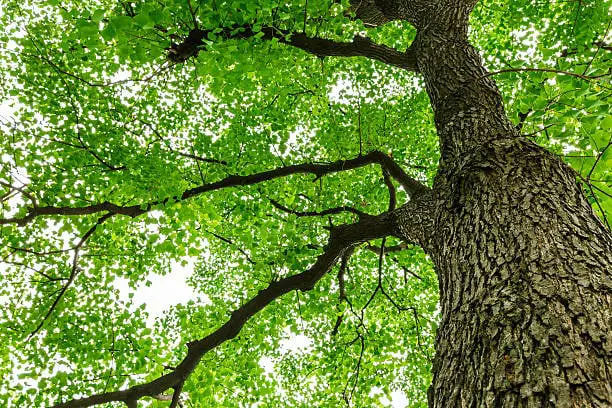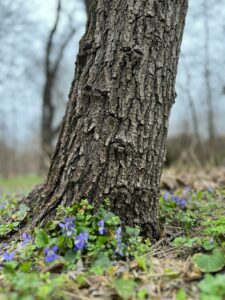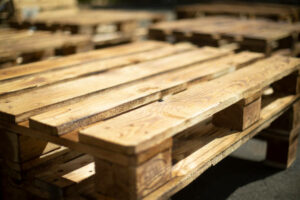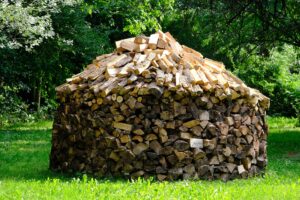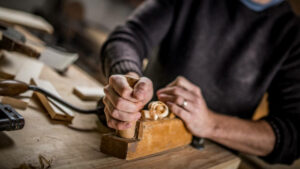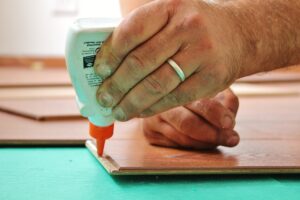Hardwoods are harvested for lumber, veneer boards, furniture, carving, and construction. Their value depends on the forest, tree species, and harvest practices. Hardwood timber comes from angiosperm trees that produce enclosed seeds. They are typically deciduous and grow in temperate and tropical forests.
The key difference between hardwood and softwood is their cellular structure. In hardwoods and oak, there are tube-like pores for transporting water and nutrients. Softwoods have a simpler cellular structure that uses cells called longitudinal tracheids and medullary rays. In this article we will be answering the question is hardwood more valuable than softwood?
Durability
Durability is a crucial factor in selecting timber for construction. Whether it’s for the interior of a commercial building project, garden landscaping, or even marine applications, the durability of wood is paramount to its success.
Hardwood species have natural durability levels that can withstand most outdoor conditions without additional preservative treatment. However, for some environments, especially those prone to humidity and condensation, an additional form of preservative is required.
Timber is graded according to its durability class which reflects the ability of a species’ heartwood to resist decay and attacks from insects. While this is a good indication of how long a particular type of timber will last, it does not take into account local factors such as moisture, weather, temperature, and competency of installation.
Softwood species like Radiata and Hoop Pine have a lower timber durability classification but can be improved significantly through various forms of preservative treatment. With the right application, these timbers can be a highly durable choice for cladding, decking, and window frames.
Hardwoods and softwoods are grouped into two groups depending on how they form their seeds. Gymnosperms (softwoods) have seeds enclosed in an ovule, while dicotyledonous trees (hardwoods) have seeds that are not. Due to this difference, the average hardwood is a lot harder and more durable than the average softwood. Accoya, a world-leading, high-performance, and sustainable wood product has key characteristics that align it with the other hardwood lumber category – including outstanding durability.
Appearance
A piece of timber made from real hardwood has a more distinctive look than the artificial products that are often used in place of wood. You can also identify hardwood by looking at the end grain of a sample. This will show you the growth rings that are a dead giveaway that this is alder or genuine, natural wood and not something manmade.
Hardwood is used for construction and joinery because of its strength, durability, and appearance. It’s also a favorite for flooring and furniture because it adds character and value to homes. Hardwoods come in a variety of shades and colours but they are generally darker than softwoods. Some examples are ebony, Brazilian rosewood black walnut, and mahogany, while maple, ash, and hickory are lighter in color.
When trying to identify a hardwood from a softwood, you can visually inspect the grain and knots in the sample to see if it is more dense than softwoods. You can also look at the color and if it’s stained or weathered. A naturally weathered hard maple wood will have a blue or grayish color and is softer in texture than stained hardwoods.
Another way to determine whether a piece of timber is softwood or hardwood is by scratching it. A softwood will leave a straight, clear line of damage, while a hardwood will not. This is an easy test to carry out in your workshop and will help you avoid using the wrong material for a project that needs to be strong, durable, and hard-wearing.
Stability
Unlike softwoods, hardwoods have complex cell structures that contribute to their strength and durability. Hardwoods also have a more prominent and heavier grain than softwoods. Softwoods, on the other hand, are pliable, light, and malleable and require preservative timber formulations to prolong their lifespan in outdoor use.
Timber’s hygroscopicity is influenced by the type of wood, species, climatic conditions, and processing methods. In general, the hygroscopicity of timber decreases with increasing MC, temperature, and pressing time. However, a balance must be found between the stability of the timber and the strength properties required.
When timber dries too rapidly, stresses set up across the wood tissues. These stresses can result in splintering and cracking. This is especially prevalent in rift-sawn timber. In contrast, a slower drying rate is preferred, which results in less splintering and splitting.
The acetylation process used to manufacture Accoya(r), for example, red oak, begins with sustainable FSC(r) Radiata pine before it’s thermally compressed under controlled temperature and pressure. The result is a durable timber with the key qualities of hardwoods such as iroko, sapele, and teak, and even surpasses some of these characteristics.
Value
Hardwood timber is often more valuable than softwood because of its longevity. Softwoods have a much shorter lifespan when exposed to direct sunlight, extreme temperature changes, or moisture and fungus. Whether used in home renovations or construction projects, hardwoods can last for decades. This durability is primarily because they have a more complex cellular structure than soft maple, which allows them to resist environmental stress.
Softwoods have a simpler, faster-growing cellular structure, which makes them more malleable and less durable than hardwoods. This is largely why softwoods are cheaper than hardwoods. Additionally, softwoods typically have fewer different cell types and more air spaces than hardwoods, making them lighter in weight.
The value of hardwood timber depends on the species, grade, thickness, and other factors. The best quality hardwood trees, such as hickory and maple, are highly sought after and command high prices in the market. However, some lesser-known species of hardwood can also be quite valuable if they are well-managed and harvested at the right time.
The timber industry is an international trade that involves multiple players. Private landowners, nonindustrial public landowners, and forest products companies are all involved in the process of purchasing and selling hardwoods. Prices are negotiated between buyer and seller from a starting point for the specific species, grade, and thickness of the hardwood.
